Content marketing is about creating destinations that relate to your topics. Part 1 made the argument to do it. Here’s some simple ways to make it happen.
If you haven’t yet, check out the first Hackgate post to see why this content marketing skill matters, and who uses it.
The Hackgate Technique takes a page from the best content marketers of all: leading digital publishing houses. These outfits elegantly bundle their own, and others’, topic-based content in an easy-to-navigate (and easy-to-index) way. The result pleases readers interested in the topic, and search engines.
This is all well and fine, you say, but how do I do it?
Initially, and at the core of any content marketing effort, there is the need for some content. The beautiful side of this technique: You can do Hackgate for beginners with little more than an eBook or deck, three blog posts and a handful of interesting links about a topic near and dear to your business.
I’ve used Mockingbird – a very slick little wireframing tool – to draw this simple and straightforward Hackgate-style content marketing page:
To anyone with even a passing familiarity with digital publishing or blogs (and particularly blogs built on WordPress) this basic layout is no stranger. You have a few core elements, easily and elegantly presented:
A. The topic at hand in big letters at the top (obvious? Maybe. But important.)
B. A marquee piece of your content, such as an eBook or deck, on the topic. In time, you may have more than one. Here you’ll put the most recent. And you can link to a separate page with all of your reference items on the topic.
C. A clear categorization of blog posts on the topic. Visitors will immediately see one attractive blog post on the topic. Then click-through to a list of them. Or perhaps we give a few sentences on the most recent post here, then just a few titles of older posts on the same topic.
D. A final bucket for excellent third-party content on the topic. You may not want to share the eBooks or posts of your direct competitor, but – it’s a big world – surely someone else has said something remarkable on the topic too?
At this point, it’s important to make a distinction about content marketing. It’s about creating a destination about a topic. If you focus this page well and update it, people may click away, but they will come back. And it’s that return traffic that builds trust, builds brand and builds business.
Even the most elementary web designer can create this simple page. The three content buckets are effectively just RSS feeds (streams of content), and new items are added to these streams based on tagging or categorization.
Obviously, the more care you pour into updating and qualifying your content, the better the results will be long-term. But, as a content marketing initiative, you should start to see search engine traffic pick up considerably in a matter of months.
Want to see one site that’s gone whole hog for this kind of digital publishing approach: Check out MobiThinking’s global mobile statistics page [DISCLAIMER: We developed this site]. What’s lost in ease of navigation is gained in depth.
An advanced Hackgate technique for content marketers
For the more advanced content marketers, an interactive tool is another excellent route. This can take a number of forms, but essentially you ask the site visitor to enter something about themselves and you provide custom feedback. People love that sh*t.
Here’s a très simple wireframe demonstrating how that can work:
You ask a few questions, and then you can tell them something about the respondent. You can put the visitor in to a relevant taxonomy, give customized advice, whatever. The sky’s the limit. And you team it up with your topic-based content.
Web 2.0’s full of these kinds of sites. Consider either SEOMoz’s Open Site Explorer or Pingdom’s site optimization tool. Enter your URL and we’ll assess you. The same kind of thinking can be applied to content marketing, but based on taxonomies as opposed to real-time monitoring.
The last piece of Hackgate-inspired digital publishing advice we’ll give you simply relates to proportions: What’s the right amount of stuff for such a page?
There are around five essential buckets for this kind of digital publishing, which include the interactive element (mentioned above), marquee items (eBooks, decks, etc.), blog posts, curated content (3rd-party) and social content (twitter or facebook feeds).
Four is probably a maximum to put on one page, before it starts looking cluttered. At least one should always be some content with some gravitas (a lasting demonstration of topic expertise), and at least one should be easily updatable like blogs or social feeds (to keep the page fresh).
In terms of screen space, the field is open:
Use the Hackgate Technique to slice and dice your content marketing pie however you like it. Just, please, be sure to monitor site visits so you know what’s happening (and call us if you’re wanting more content marketing ideas).

Enjoyed this article?
Take part in the discussion


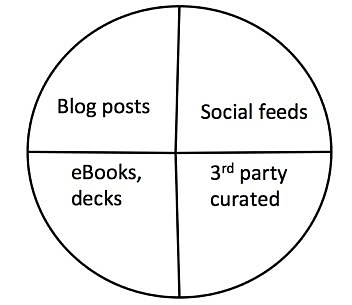
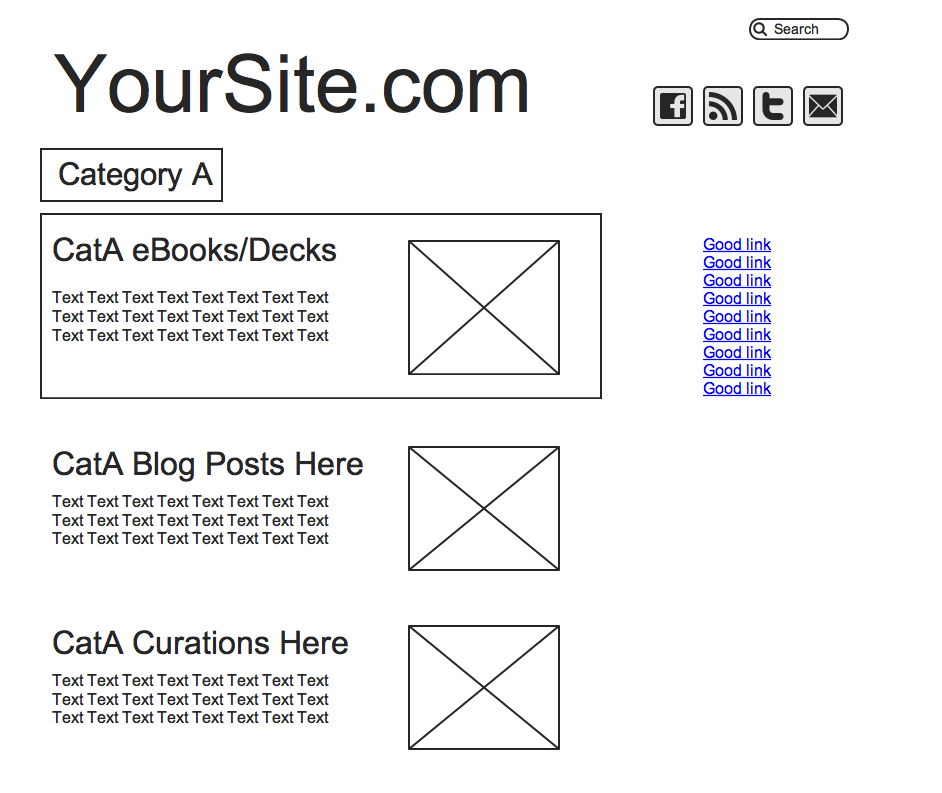
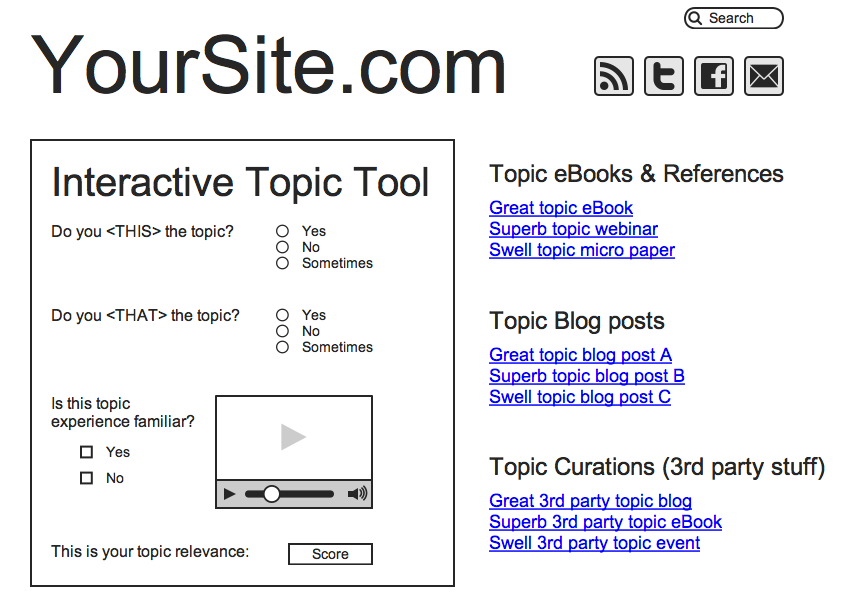
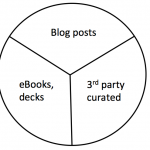
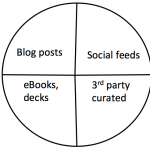
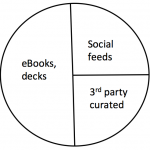





Comments
Gratis Chatten December 30th, 2014
Ryan : Ja, we echt hard gewerkt om te komen waar we nu dus we
zijn gewoon aan het werk op het genieten van het ook in plaats van alleen te focussen op wat de toekomst .
Veel mensen beschuldigen het voor het vervangen van correct Engels met korte,
slang woorden het vormen van een bijna nieuwe hybride taal .
voor iets meer dan alleen maar privé -chat , is YABA ontworpen om u om te
chatten met wie je maar wilt, in privé , één – op-één of in een speciale virtuele
ruimte waarvan toegangscode die u kunt delen met je vrienden .